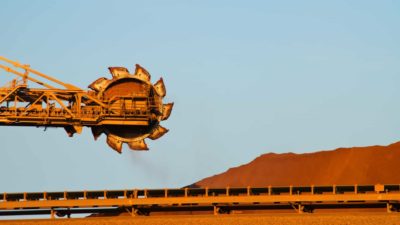IGO Ltd (ASX: IGO) shares closed 3.2% lower today at $13.01 apiece. This comes two days after the company released its FY22 results.
Also posting its earnings this week was ASX mining peer Mineral Resources Limited (ASX: MIN). Its share price also finished in the red today, down 1.84% to $62.79.
But how do these two ASX mineral explorer shares compare? Let's take a look.
IGO FY22 results recap
IGO released a sound set of financial results for FY22, as covered by my colleague Brendon Lau. Revenue rose 34% to $903 million but net profit after tax (NPAT) dropped 40% to $331 million.
The drop in NPAT was due to a tax charge on the sale of the company's Tropicana asset.
Despite the fall in IGO's bottom line, it still declared a fully franked dividend of 5 cents per share.
IGO appears to be in a reasonably steady financial position with a cash balance of $367 million and new debt facilities of $900 million.
Current liabilities for FY22 was in the order of $440 million. So, it would seem IGO needs to rely on debt to stay on top of its short-term liabilities because IGO is not free cash flow positive.
On cash flow, IGO recorded operating cash flow of $357.1 million, which is down from $446.1 million in FY21.
The IGO share price climbed 3.79% on the back of these results on Tuesday, and gained another 2.21% yesterday.
How do IGO shares stack up against Mineral Resources?
The FY22 results for Mineral Resources weren't as good as IGO as revenue fell 8% to $1.02 billion and NPAT declined 72% to $351 million.
My colleague Monica O'Shea covered the results and noted that the fully franked final dividend dropped 42.8% from $1.75 per share in FY21 to $1 per share in FY22.
Net cash from operating activities fell from $1.3 billion in FY21 to $279.8 million in FY22. The big drop was primarily due to an increase in working capital relating to the restart of Wodgina, the ramp-up of Mt Marion production and the conversion of the company's spodumene concentrate into lithium hydroxide.
I find it interesting that IGO managed to record higher operating cash flow with less revenue. However, it appears the rise in operational expenditure may have been higher than historical levels for Mineral Resources.
Similar to IGO, Mineral Resources is not free cash flow positive.
IGO possesses much more short-term debt at $913.6 million and there is nearly $3 billion in long-term debt sitting on the balance sheet.
Mineral Resources does hold $2.4 billion in cash though.
From a financial strength perspective, it seems like IGO is in a slightly better position.
The Minerals Resources share price fell 1.74% on Monday when the results were announced, but climbed 6.2% the following day. However, it gave up most of those gains on Wednesday, losing 5.87%.
IGO share price snapshot
The IGO share price has risen by 35% in the past year and is 20% higher in the last month. As for the Mineral Resources share price, it has jumped 18% in the last year and has gone up 18% in the past month.
IGO has a market capitalisation of around $9.85 billion. The Mineral Resources market cap is sitting at $11.89 billion.









